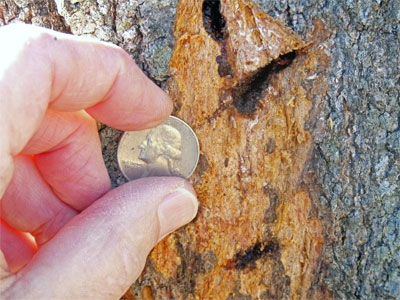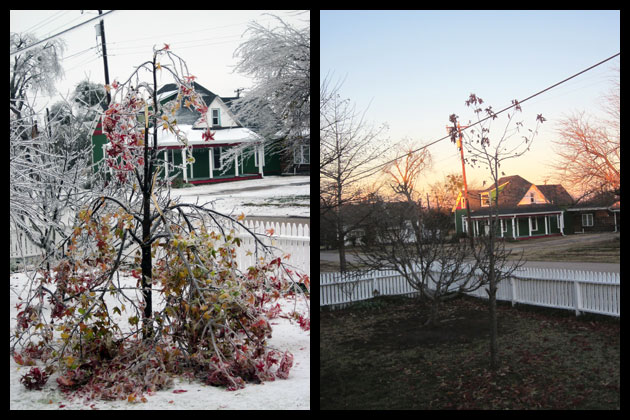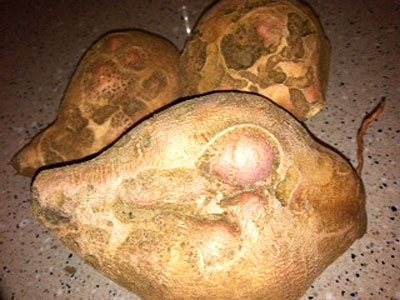Question and Answer February 2014
If you’d like Neil to help with a plant question, he is ready. Click to send him your photo. It helps if you’ll also tell him the city where you garden, as answers will be different for the widely diverse state of Texas. He answers questions of most general reader interest in the next edition of e-gardens. No specific plant IDs, please, especially of volunteer seedlings, as those are usually of interest to that reader only. That said, here are this month’s questions and Neil’s replies.
Question: I’m afraid this winter’s cold has killed my Confederate star jasmine. I have 16 plants, and they all are brown and crisp. There are a few somewhat green leaves in the interiors. Should I leave them alone a few more weeks and see if they come back, or will I need to plan on replacing all of them this spring? I’ve read of a variety called Madison that is supposed to be more cold-hardy. S.S., Frisco.

Answer: I am a huge fan of Confederate star jasmine. I grew up with it all around College Station. The fragrance of its flowers is my favorite of all flowering plants. But I’ve never been able to keep one alive outdoors in the same Metroplex-area county that you live in. I even tried Madison two different times with the same outcomes. You will occasionally see mature plants that have obviously survived several winters in urban “heat pockets” around DFW, but I suspect that even those plants were hurt this winter. I have one that I’ve grown on a trellis. It’s in a pot, and it goes into the greenhouse every winter. That’s been the only way I could succeed with it in Collin County. You really ought to limit your number to one plant, and set it into the most protected spot (sunny) that you have. Use something else where these were (assuming they do not put out new growth come spring). As for the plants in your photo, sadly, I’m sure they have frozen to the ground at a minimum. Very sorry.
Question: We have four Burford hollies in front of our house. One died last fall without much notice. One week it was green, and within 10 days, it turned brown and died. I have found no signs of pests. Now I’m seeing a second one with similar symptoms. Could it be this winter’s cold? K.S., no city given.

Answer: It isn’t cold damage if it showed up last fall on the one plant. I have a ton of hollies around our landscape, and the only thing I have ever seen affect any of the many dozens of plants that I have had in 37 years of growing them has been drought. Your photos show examples of plants that have gotten too dry. Hollies never wilt, so it’s fairly easy for them to pass the point of no return before we’re really aware. It’s most common with new plants that haven’t established good root systems yet, and it often is attributable to a sprinkler system malfunction. Or it can be due to water curtailments. For what it’s worth, your photo looks like the very closely related Willowleaf holly more than either of the Burfords (regular or dwarf), but that doesn’t alter my comments at all.
Question: I spoke with you recently on the air about a decayed area in our 15-year-old red oak. It is very healthy, except for the decay about 3 feet off the ground on the east side. I have cleaned out the holes. Is there a certain type of borer that does this damage? Should I put something in the holes? L.N., Allen.


Answer: I’m sure there is a specific type of borer that gets involved in this, and if I were a good entomologist instead of a forever-learning horticulturist, I’d nail the name for you. Fact is, it doesn’t matter, because once you help the tree overcome this localized damage, it should recover and move on beyond it. The fact that the damage was on the sunny east side of the trunk probably means that the bark was damaged some cold winter morning when sun hit it while it was still frozen. Trunk tissues can crack like an automobile windshield. They can also sunburn in summer. The damage was probably from some time ago. It looks like the tree has enough bark protection to carry it from now on. It never hurts, of course, to let a certified arborist do an on-site inspection. He or she could look at this spot, but more than that, at the tree as a whole.
Question: The top halves of four of our 10 juniper trees have died (see one in the photo). Why would this be happening a couple of months apart? The bottoms of the plants do not die. L.H., no city given.

Answer: Here is an answer I posted to the same question on my Facebook page 53 weeks ago. I archive a lot of my answers when they come up frequently. I hope this helps.
“That’s an ultimately common problem with Blue Point juniper. It’s the reason I just cringe when I see people (and cities) planting it. Scroll down on this blog (link below), and you’ll see photos that may match what you saw in your landscape. It’s just not a good juniper. I like Spartan very much, but I lost mine to this same stem canker. I don’t know if it’s the pathogen Phomopsis (can’t remember), but there isn’t any type of product to control it. As you probably have noticed, I’m a huge fan of hollies of all types. Oakland holly is upright, tolerant of a lot of different conditions and, as long as you don’t let it dry out, really dependable. Without seeing your landscape, that would be my starting point.” http://forums.gardenweb.com/forums/load/txgard/msg0718394625787.html
Question: See my two photos, please. I’d like to remove the lowest limb on the oak. How and when do I do it correctly? And for the red maple, should I cable these trunks together, so they don’t split at some point in the future? T.W., Leonard.


Answer: There is no problem in removing that lowest branch on the oak. Do so no later than early February, however, so you don’t spill over into the active oak wilt season. The cut should be made carefully, so you don’t peel bark down the trunk. First cut should probably be 10 or 15 inches out on the branch, just to remove most of the weight. Second cut would be near the trunk, to leave nothing more than the branch collar in place on the tree. Do not leave an extended stub of more than 1/8- to 1/4-inch. Apply a light coating of pruning sealant. It’s recommended for oaks due to oak wilt, but not for other types of trees. As for the red maple, I don’t see a clear path to pruning it. Ideally, it would have been trained single-trunk. I still might consider removing the large left trunk and the small middle branch entirely, then trying to reshape what was left. The middle one needs to go for sure, since it appears to be aligned with the other two. If so, it will never develop into a vigorous branch. Leaving the two large trunks and cabling later 10 or 12 feet off the ground might be an option. Next time, however, try to start the training program earlier.
Question: Should we remove this red maple tree that lost so many branches due to the ice, or should we let it sprout out and see what it looks like? P., Honey Grove.

Answer: It appears still to have a good, sound trunk. Start by removing all of the jagged tissues. Trim the remaining branches to balance the look of the tree. Let it regrow this spring. It will do so very assertively. You may need a little follow-up training to get it back on track, but it’s worth trying.
Question: This “potted” crape myrtle was growing in the front yard when we bought our house a few months ago. Can we remove the pot? We think the roots have grown through the pot and into the soil. It flowered sparingly last summer. Any advice? K., Austin.

 Answer: There is absolutely no question that it has rooted into the soil. To extricate it is going to involve removing the pot entirely, perhaps with a small power saw. (Be careful!) Then you’ll almost have to treat it as if you were transplanting it. Dig its root ball (from the actual soil) as best you can. (You could actually dig it out, lay it on its side and cut the pot away, if that sequence makes the process easier and safer.) Dig a hole deep enough to set the original pot ball down to ground level. You’ll have to thin the plant out by removing several of the trunks and perhaps by reshaping the top growth. Do not, however, “top” it! Crape myrtles bounce back quickly. Keep it moist, and it should do well.
Answer: There is absolutely no question that it has rooted into the soil. To extricate it is going to involve removing the pot entirely, perhaps with a small power saw. (Be careful!) Then you’ll almost have to treat it as if you were transplanting it. Dig its root ball (from the actual soil) as best you can. (You could actually dig it out, lay it on its side and cut the pot away, if that sequence makes the process easier and safer.) Dig a hole deep enough to set the original pot ball down to ground level. You’ll have to thin the plant out by removing several of the trunks and perhaps by reshaping the top growth. Do not, however, “top” it! Crape myrtles bounce back quickly. Keep it moist, and it should do well.
Question: Can this Chinese pistachio be saved from the damage done by the ice? R.B., Garland.

Answer: Oh, my. That’s really significant, and because it appears that the tree will now be leaning toward the house, I have extra concerns. I’d suggest getting a certified arborist on site to advise you. The trunk looks like it has some other issue going on at the very top of your photo. Another solution might be to invest the same amount in a new tree. I might be leaning that way. If possible, move the planting spot out a few feet farther from the house.
Question: My wax myrtles were hurt by the ice. One large limb on each was broken by the ice. What is the best way to deal with this? B.P., Arlington.

Answer: Really sorry this bad ice storm hurt so many plants, yours included. Your best bet short-term is to remove the damaged branches/trunks and see how it regrows. For what it’s worth, my observations with wax myrtles have been that they tend to thin and die out over time. If you ever have to replace them, tree-form yaupon hollies would be a good option. (It looks like a narrow column of one or two hours of sunlight will reach any plant that you use here. You might be better served by an upright holly like Oakland.) Good luck with these, though!
Question: One of my multiple-trunked yaupon hollies produces berries on one of its main trunks only (out of five trunks). Is this one female plant mixed in with four male plants? Will it ever produce berries on the other trunks? J.J., Parker County.


Answer: From the straight-down photo, it does look like you have several entirely different plants here. I agree with your assessment that you have one female plant among all the guys. I wish I could tell you that the male stems would eventually bear fruit, but that’s about as likely as my having a baby – just isn’t going to happen. You have a nice cluster, and your best bet might be gradually to prune it to encourage the berry-producing portion while you remove the non-fruiting parts by selective and consistent pruning. I’ve done something gently akin to that with a yaupon that was terribly misshapen when I bought it, and I know it can be accomplished. Good luck with it!
Question: We transplanted this oak into our landscape 14 years ago. These furry things appeared after the summer. An arborist said they were insect galls and that they would not harm the tree, but the only galls I have seen are hard and woody. What do you think? C.F., Grayson County.

Answer: Yep. Your arborist was right on target. I read a report once that there are more than 800 species of galls that attack oak trees. They vary greatly, and this is just one of them. No worry. No call to action.
Question: What can I do to help my live oak survive? It was split by the ice. No name, no city given.

Answer: It’s been really sad to see the many photos of ice damage. (I have selected only a general assortment as examples.) In your tree’s case, the tree itself will surely survive, but you may have to start over from the roots up. I can guarantee that’s not the answer you wanted, but honestly, it looks like the splitting took half of the tree with it. You’ll be amazed at how quickly you’ll be able to select a new and strong sprout from among the many it will send up if you cut it to the ground. You’ll have a good-sized regrown tree within just a few years. I would forever be worried about this one as it stands. (That assumes the photo portrays it correctly.)
Question: What did I do wrong in growing my sweet potatoes? They were all deformed when I harvested them. I think I waited too late into the season. Any advice? K.R., Corsicana.

Answer: They do look like they were in the ground too long. Try growing them rapidly next year by planting them in sandy loam and keeping them moist. Dig a few sample roots a little earlier in the fall, and harvest when they haven’t gotten so big and “woody.”

